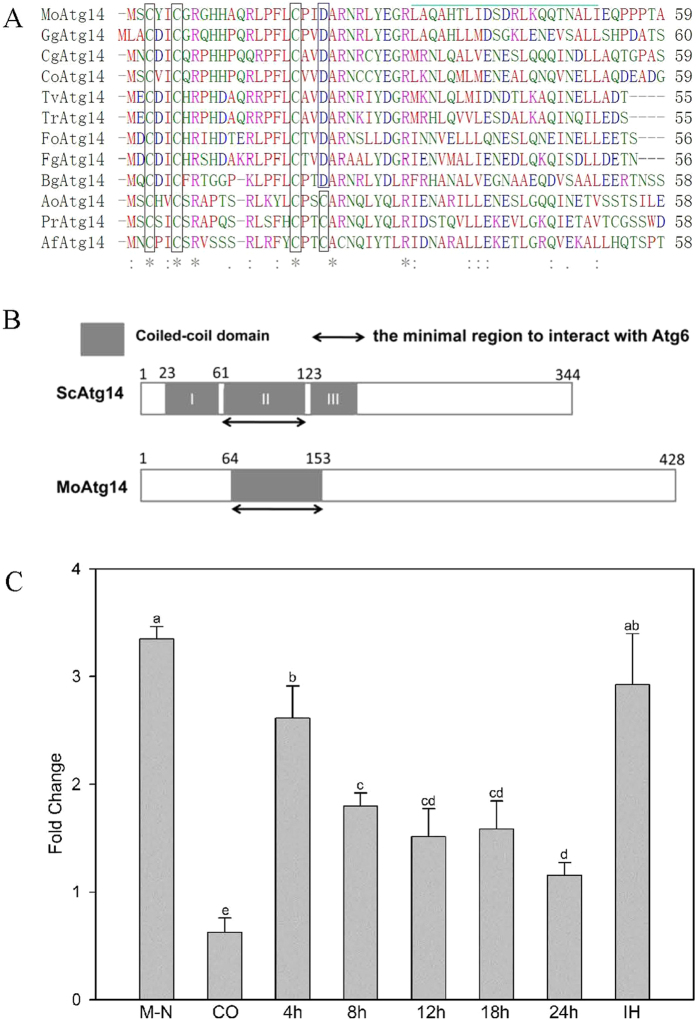Figure 1.
(A) The amino acid sequence of the N-terminal motif containing the conserved cysteine residues in the ascomycetes fungi. The conserved cysteine residues are in the box. The green line indicates the start of the conserved coiled-coil region. GgAtg14, accession No. XP_009224438; CgAtg14, accession No. EQB48915; CoAtg14, accession No. ENH80301; TvAtg14, accession No. XP_013959553; TrAtg14, accession No. XP_006966865; FoAtg14, accession No. EMT61395; FgAtg14, accession No. XP_011316371; BgAtg14, accession No. EPQ63265; AoAtg14, accession No. BAE65502; AfAtg14, accession No. XP_747209; PrAtg14, accession No. CDM36188. (B) The domains of the yeast ScAtg14 and M. oryzae MoAtg14. Boxes in grey indicate the coiled-coil domains. (C) The expression profiles of the MoATG14 gene in development, pathogenicity and starvation stress. qRT-PCR assays were carried out with RNA samples obtained from different stages of the wild-type strain Guy11, including vegetative hyphae, conidia (CO), appressoria, invasive hyphae (IH) and nitrogen starved hyphae (MM-N). Gene expression levels were normalized using the β-tubulin gene as an internal standard. Data are representative of at least two independent experiments with similar results, and the error bars represent the standard deviations of three replicates (P < 0.01). Different letters indicate a significant difference.

